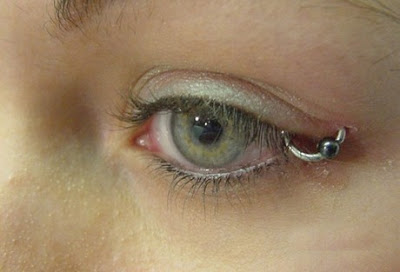California’s perennial debate over how much it is and should be spending on its largest-in-the-nation public school system has escalated sharply this year as the state faces a whopping budget deficit and Gov. Arnold Schwarzenegger proposes – whether seriously or not is uncertain – to take a big bite out of the schools’ money to close it.
 The educational establishment and its allies in the Democratic leadership of the Legislature are howling about the governor’s proposal that school spending be whacked by $4.8 billion from what the constitution otherwise would require it to be through the 2008-09 fiscal year.
The educational establishment and its allies in the Democratic leadership of the Legislature are howling about the governor’s proposal that school spending be whacked by $4.8 billion from what the constitution otherwise would require it to be through the 2008-09 fiscal year.
 The Democrats have vowed to block any budget that makes a substantial reduction in state school aid and the California Teachers Association and other school groups have resumed their high-decibel complaint that California’s per-pupil spending is already near the bottom of the states.
The Democrats have vowed to block any budget that makes a substantial reduction in state school aid and the California Teachers Association and other school groups have resumed their high-decibel complaint that California’s per-pupil spending is already near the bottom of the states.
 Republicans and other critics, meanwhile, complain that California is wasting much of its school money on bloated administration and ineffective, faddish educational nostrums. They cite the state’s near-bottom rankings in national educational achievement test scores.
Republicans and other critics, meanwhile, complain that California is wasting much of its school money on bloated administration and ineffective, faddish educational nostrums. They cite the state’s near-bottom rankings in national educational achievement test scores.
In the midst of this debate, the Census Bureau on Tuesday issued an extremely detailed accounting of what states (and the District of Columbia) are spending on their schools. It undercuts the mantras being chanted by both of California’s warring political factions.
Unlike other statisticalcompilations about school spending, the Census Bureau’s report is based on hard numbers, is as up-to-date as such data can be (2005-06 fiscal year) and, most important, includes financing from all sources and spending on all categories, rather than the selective figures being batted around by others.
The Census Bureau report strongly refutes the oft-cited “fact” that California is near the bottom in per-pupil school spending. The national average was $9,138 in 2005-06. California was at $8,486, with New York the highest at $14,884 and Utah the lowest at $5,437 – one of 22 states, in fact, that fell below California’s level.
In terms of school revenues, California was 25th among the states at $10,264 per pupil, just under the national average. It was above average in per-pupil income from federal and state sources and about $1,700 per pupil below average in local revenues, thanks to Proposition 13, the 1978 property tax limit measure.
Overall, therefore, California isn’t nearly as deficient in school financing as the education establishment would have us believe. But neither is it wasting money on administrative overkill, as critics on the right contend. Its per-pupil spending on non-instructional “support services” was in fact, slightly below the national average at $3,050, although the sub-categories of overall and school site administration were a bit above average.
The most important aspect of the school spending reports, however, is that they underscore the truism that there’s very little correlation between the amount of money a state spends on public education and how its students fare in academic tests, dropout rates and other measures of educational performance.
California is second from the bottom, for example, in fourth-grade reading scores on national achievement tests, ahead only of Washington, D.C. But Washington is very near the top in per-pupil income and spending at $18,332 in revenue and $13,446 in spending. Conversely, many states nearer the bottom in per-pupil spending, including Utah, outrank California in test scores and other measures.
Money may be important, but it’s clearly not the only factor determining how well schools are educating children. We should be paying attention to what the kids need, not the political goals of adult warriors.
Unlike other statisticalcompilations about school spending, the Census Bureau’s report is based on hard numbers, is as up-to-date as such data can be (2005-06 fiscal year) and, most important, includes financing from all sources and spending on all categories, rather than the selective figures being batted around by others.
The Census Bureau report strongly refutes the oft-cited “fact” that California is near the bottom in per-pupil school spending. The national average was $9,138 in 2005-06. California was at $8,486, with New York the highest at $14,884 and Utah the lowest at $5,437 – one of 22 states, in fact, that fell below California’s level.
In terms of school revenues, California was 25th among the states at $10,264 per pupil, just under the national average. It was above average in per-pupil income from federal and state sources and about $1,700 per pupil below average in local revenues, thanks to Proposition 13, the 1978 property tax limit measure.
Overall, therefore, California isn’t nearly as deficient in school financing as the education establishment would have us believe. But neither is it wasting money on administrative overkill, as critics on the right contend. Its per-pupil spending on non-instructional “support services” was in fact, slightly below the national average at $3,050, although the sub-categories of overall and school site administration were a bit above average.
The most important aspect of the school spending reports, however, is that they underscore the truism that there’s very little correlation between the amount of money a state spends on public education and how its students fare in academic tests, dropout rates and other measures of educational performance.
California is second from the bottom, for example, in fourth-grade reading scores on national achievement tests, ahead only of Washington, D.C. But Washington is very near the top in per-pupil income and spending at $18,332 in revenue and $13,446 in spending. Conversely, many states nearer the bottom in per-pupil spending, including Utah, outrank California in test scores and other measures.
Money may be important, but it’s clearly not the only factor determining how well schools are educating children. We should be paying attention to what the kids need, not the political goals of adult warriors.
No comments:
Post a Comment